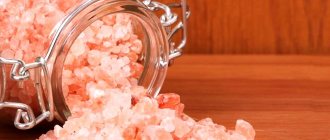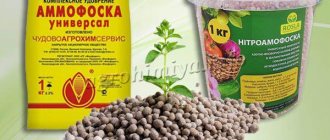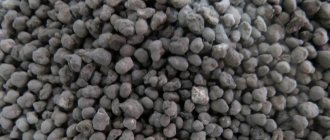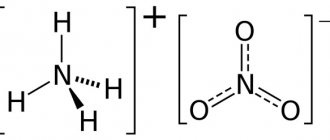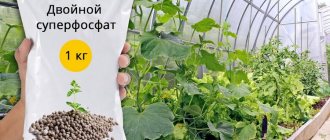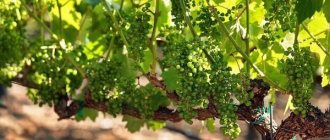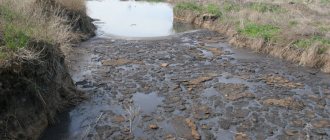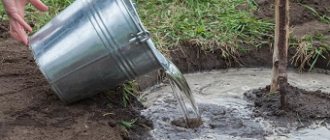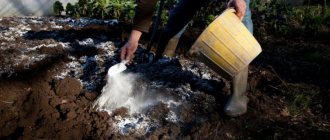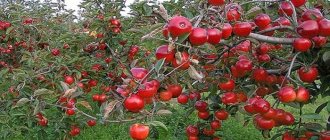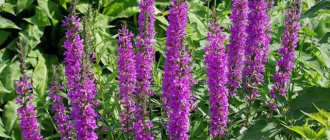Every year in spring and summer, summer residents are concerned with the same question: “How to feed the plantings in the vegetable garden and the bushes in the garden?” Today we want to tell you about one of the most effective complex remedies. This is azofoska. You will learn which plants need to be fed, how to properly prepare the working solution and at what stage it is best to use it.
Dear readers! For you, we have created communities on social networks in which useful articles and interesting ideas are published several times a day! Subscribe and receive useful content in a convenient format!
What is azofoska
Azofoska are small round granules of a gray or pale pink hue. No more than 4 mm. In fact, it is a complex mineral product containing the basic elements of plant nutrition, namely nitrogen, potassium and phosphorus.
Azofoska is produced by many enterprises. This is one of the most common and effective fertilizers in agriculture in the territory of the former USSR.
What is the difference between Azofoska and Ammofoska and Nitrophoska?
Also check out these articles
- Septoria
- Tomato idol: photo, description of the variety and characteristics of the tomato
- Teppeki insecticide for pests
- Larch gives comfort and health
Fertilizer manufacturers produce a variety of products that are similar in effect to Nitroammofoska. But they still differ in composition and these differences affect the scope of their application in agriculture.
Fertilizer Azofoska
Similar to the classic Nitroammofoska, this fertilizer is also three-element. However, Azofoska, in addition to nitrogen, phosphorus and potassium, contains sulfur. Otherwise, these two mineral fertilizers are similar, not only in composition, but also in their effect on plants.
Fertilizer Ammofoska
Unlike other fertilizers of the subclass, in addition to the 3 classical elements, the NPK formula contains magnesium and sulfur (the latter at least 14%). Another difference is the possibility of use on closed ground. Ammofosk does not contain chlorine and sodium, and the content of ballast substances is reduced to a minimum.
Fertilizer Nitrophoska
This fertilizer contains magnesium in addition to the classic NPK formula. In terms of the aftereffect, Nitrofoska is at a disadvantage compared to Nitroammophoska. Nitrogen is included in its composition only in nitrate form, which is easily washed out of the soil, which is why the effect on plants quickly weakens. Nitroammophoska contains, in addition to the nitrate form, the ammonium form of nitrogen, which significantly prolongs the duration of the effect of the fertilizer.
Formula and composition of azofoska
Azofoska is part of the family of NPK preparations, that is, those products that contain nitrogen (N), potassium (K) and phosphorus (P). Some sulfur may also be present to improve photosynthesis.
In general, the main components are presented in almost equal proportions:
- Nitrogen – from 15 to 25%;
- Potassium – from 5 to 19%;
- Phosphorus – from 5 to 20%.
These microelements are needed to increase the green mass of plants of all types. Potassium and phosphorus are also needed for abundant flowering and fruit set.
ON A NOTE. There are several types of this feeding, which differ in the ratio of the main microelements: nitrogen, phosphorus and potassium (16/16/16, 19/9/19, 22/11/11). The most common form is NPK 16/16/16/. This is the standard fertilizer of this type.
It is interesting that all the main microelements in the preparation are of natural origin. For example, phosphorus is a product of the enrichment of special phosphorus shells. Potassium is extracted from potassium salts. Nitrogen is actually presented in the form of ammonium nitrate - one of the most digestible forms of nitrogen.
Feeding indoor plants
Fertilizer is universal, so it is also used very actively for house flowers.
Since ready-made, purchased soil is usually used for growing indoor flowers, the standard type of azofoska 16:16:16 is ideal for it. It is better to use it in the form of an aqueous solution - 2-3 grams of granules per 1 liter of water for irrigation.
Houseplants need to be fed every spring, during the period of intensive growth; you can repeat the procedure as needed every 2 months. For the winter, feeding is stopped.
What is the difference between azofoska and nitroammofoska?
Azofoska and nitroammofoska are very similar: both in their composition and in the effect they have on plants.
The whole difference between these drugs is that azofoska contains sulfur, which is necessary for photosynthesis. Otherwise, these are completely identical fertilizers.
ON A NOTE. Other drugs in this family are Ammofoska (+magnesium and sulfur), Nitrophoska (+magnesium).
That is, in other words, azofoska is an improved version of nitroammophoska.
Azofoska for fertilizing tomatoes
Azofoska fertilizer is also useful for tomatoes, but you need to use it correctly so as not to harm it.
- The first feeding is carried out during planting of seedlings in a permanent place. To do this, you need to make a solution (35-40 g of fertilizer per 10 liters of water).
- After 2 weeks, feeding is repeated.
- After another 2 weeks, you need to make fertilizer from a pale pink solution of potassium permanganate and 3-4 g of Azofoska.
- During the flowering period of tomatoes, add a solution of 25 g of Azofoska, 25 g of mullein and 10 liters of warm water.
After these 4 treatments of the tomato, it is not recommended to apply new fertilizers, at least mineral ones.
How to determine that plants need to be fed with azofoska
In general, the described product can be added when digging the soil and preparing the soil for planting. This is done both in spring and autumn.
In fact, the whole point is that no matter how fertile the soil is, plants extract useful substances from it. In order for the soil to continue to be fertile, fertilizers must be added to it. You can use organic matter, or you can use azofoska, which is much more effective, since all the microelements in it are presented in a more concentrated form.
If we talk about plants, the need to feed them can be determined by their appearance.
With a deficiency of microelements, the leaves and shoots of plants become sluggish, the flowering is small and faded, the flowers often fall off, and the fruits are poorly set. The foliage is also deformed. Leaf blades curl and lose their color.
The fruits turn out ugly and tasteless. And the plant itself often gets sick and becomes an easy victim of parasitic insects.
How to measure the amount of fertilizer
Scales are not always at hand, and it is useful to know other ways to measure the mass of azofoska for accurate dosage of fertilizer. Below are examples of various containers indicating the amount of nitroammophoska in grams:
- in 1 tbsp. l. - 14 g;
- in 1 tsp. - 5 g;
- in a matchbox - 18 g.
In addition to violating the dosage recommended by the manufacturer, beginners make a number of other common mistakes:
- apply fertilizing to cold soil without waiting for the soil to warm up. In this case, there is a risk of the fertilizer being washed away by melt water;
- apply the same fertilizer on the site for two or more seasons instead of alternating fertilizer and organic matter;
- they forget to embed the granules into the soil, which leads to a rapid loss of the properties of the agrochemical.
Experienced gardeners give the following recommendations:
- Apply fertilizer to moist, tilled soil.
- Apply fertilizer in early autumn with dry granules before digging, and in spring and summer water with a solution.
- Keep in mind that most crops require up to 2 feedings throughout the year.
- Choose agrochemicals from Finnish and domestic manufacturers, since these are the products developed taking into account Russian climatic conditions.
- The drugs presented on store shelves differ in both purpose and dosage. Choose carefully what is needed for your case, and be sure to follow the instructions on the package.
If mineral supplements are used correctly, you can significantly accelerate the growth of crops and obtain a harvest of high-quality products. Information about plants that respond best to nitroammophoska can be found in other articles on the site.
Using azofoska as a fertilizer in spring
In spring, this fertilizer can be used even at the stage of growing seedlings. Seedlings accept fertilizer well after picking.
The fertilizer can then be sprinkled before plowing or digging the soil.
When dry, the granules are poured into planting holes and introduced into the tree trunk circle under trees and shrubs.
In addition, a liquid solution can be prepared from the product.
IMPORTANT! In spring, this drug can be used only when the soil has warmed up sufficiently. That is, on average, no earlier than the end of April - beginning of May.
Using Azofoska fertilizer in the garden
We recommend reading our other articles
- Impatiens indoor plant
- Landscaping of a reservoir
- Let's deal with the codling moth
- Grapes: purchasing rules
Azofoska fertilizer is suitable for any agricultural crop, which is why it is widely used in gardening and horticulture. It is used in open and closed ground. And the type of soil and its acidity do not greatly affect the fertilizer, and yet, depending on the type of soil in the garden, the method of use may differ.
- For soddy-podzolic, clayey, leached soil, fertilizer is used as desired. One application or multiple applications – the effectiveness is equally high.
- If the soil is simple, chernozem, carbonate, the positive effect is slightly reduced, so it is recommended to fertilize more than once to consolidate the effect, so to speak.
- Gray soils and chestnut lands absorb Azofoska well if irrigation is used.
How to apply for feeding in the fall
The drug can be used in the fall. It is used dry. The granules are scattered around the garden and the soil is dug up.
The amount of product for autumn plowing or digging is 2-3 matchboxes of the product per 1 square meter of garden area.
Fertilizer should be used in September-October before frosts begin to prevent the accumulation of nitrates in the soil.
Using Azofoska in spring
There are several methods for using Azofoska fertilizer in the spring. But before describing them, it is worth mentioning that this fertilizer is applied, as mentioned above, only to warm soil. This means that it cannot be used until the earth warms up. Depending on the region, this time may come in April or May, in some southern regions in mid-March, in general, it all depends on the weather.
- The first time fertilizer is usually applied during digging. The concentration depends on the type of plants that will be planted in a particular bed.
Interesting!
When using Azofoska, crop yields increase by 30-70%.
- When seedlings are planted in the ground, very often gardeners add Azofoska to the holes. For each hole you need to take 2-4 grams. If the concentration is increased, the roots of the plants may get burned. After applying the fertilizer, it is mixed with the soil and only then the sprouts are planted.
- It doesn’t hurt to feed the seeds of garden crops if you use the seed method for growing rather than seedlings. Only the concentration of the drug for seeds is reduced by 1.5-2 times.
Photos of Azofoska fertilizer from different manufacturers
Instructions for using azophosphate as a fertilizer in the garden
Let's consider the standards for fertilizing with this product the main cultivated plants that are grown in personal plots.
Fertilizing azophoska cucumbers
Cucumbers are fed with fertilizer three times:
- A few days before sowing, the bed is watered with a solution of the drug (40 g per bucket of water);
- At the stage of growing green mass, water the cucumbers with liquid fertilizer (40 g per bucket of water);
- 15 days after the second feeding, the liquid composition is used again (40 g per bucket of water).
How to use for strawberries in spring
Strawberries are fertilized twice: first in the spring before flowering. The second time was after picking berries.
For the first feeding, make liquid fertilizer (mix 3 matchboxes of urea and 10 liters of water). If it rains, you can scatter granules (2 matchboxes per square meter).
Fertilizing after harvesting should be liquid. The solution is prepared from 2 tablespoons of the drug and a bucket of water.
How to use for trees and shrubs
Trees and shrubs in the garden are fed at the rate of 1.5 matchboxes of fertilizer per square meter of tree trunk circle. Afterwards the soil is dug up and watered abundantly.
Is it possible to feed garlic?
Garlic can be fed with this product twice. The first time when preparing a bed for vegetables. At this stage, 500 grams of fertilizer per hundred square meters is applied. During the growing season, garlic is fed at the rate of 100 grams of azofoska per 1 hundred square meters of plantings.
How to water seedlings with a solution
Azofoska is used after picking. If you grow seedlings without picking, then fertilizing is carried out at the stage of 2-3 true leaves.
For seedlings you need 3 teaspoons per 1 liter of water.
How to fertilize potatoes with azophos
Potatoes are fed either during planting (several granules for each potato) or during autumn plowing of the soil (40 grams per square meter).
How to use for cabbage
Cabbage can be watered while growing seedlings (10 grams per 10 liters of water). The second time the drug is added to the hole during planting (a teaspoon of the product per planting hole).
Raspberry feeding
The drug is applied to raspberries in dry form in the spring. Consumption rate – 3 matchboxes per square meter. The granules must be embedded in the soil, after which abundant watering is carried out.
Fertilizing flowers with azofoska in open ground
For flowers in open ground, the product is used as a flowering stimulator. The drug increases the number of inflorescences and the duration of flowering. To prepare a liquid solution, you need to mix 2 matchboxes of granular product in a ten-liter bucket of water.
Azofoska for indoor flowers and plants
This fertilizer can also be used for house plants.
Unlike garden crops, only a liquid product is prepared for indoor flowers. The recipe is as follows: half a teaspoon of granules and 1 liter of water. It is necessary to feed during the period of flower growth and development.
The main advantages and disadvantages of azofosk fertilizer
The choice in favor of azofoska, a fertilizer for lawns and beds, is due to the affordable cost and economical consumption of the agrochemical and its harmlessness to humans. You can use fertilizer on any type of soil, regardless of pH. All berry and vegetable crops will benefit from treatment with this composition. The usual yield increase is 30%. NPK works especially well on clay, sandy, depleted and marshy soils - here you can achieve a 50% increase in yield. Detailed instructions from the manufacturer will help you decide on the dosage and method of applying azofoska. Due to its good solubility in water, azofoska can be used as a fertilizer for grapes and other crops for irrigation and simply dug into the ground during the rainy season.
The disadvantages of azofoska include sensitivity to overheating - it is recommended to dilute the remaining substance after gardening with water and pour it onto the soil to avoid spontaneous combustion. The dosages specified by the manufacturer should not be exceeded - instead of being beneficial, an excess of the main components will harm the crop and soil. This drawback does not relate to the substance itself, since its inept use in the garden is to blame.
Compatibility of azofoska with other fertilizers table
The table below shows the compatibility of azofoska with other mineral preparations.
Compatibility table of azofoska with other mineral fertilizers
| Compatible | Incompatible |
| Ammonium nitrate | Calcium nitrate |
| Ammophos | Karboammofos |
| Magnesium sulfate and magnesia | Urea |
| Ammonium sulfate | Powdered Phosphate |
| Superphosphate | Ammonium sulfate |
| Potassium chloride | Ammonium sulfate |
Reviews of Azofosk fertilizer
The effectiveness of Azofoska fertilizer speaks for itself - gardeners often use this product and speak positively about it.
- Nikita Getel : “If it weren’t for the nitrates that accompany mineral fertilizing, I would use this fertilizer every year. And so, I take breaks. I feed tomatoes, cucumbers, strawberries and other crops fully and according to all the rules one year, and for the next 2 years - only organic matter. The harvests are looking good, so if you’re worried about nitrates, just take breaks.”
- Igor Zabolyusky : “Not a bad fertilizer. Although I still prefer organic substances. I use it rarely, if it is clear that the plants do not have enough nitrogen, phosphorus or potassium, and only in the spring. In the summer they choose mulch, and in the fall I add humus and compost for digging.”
- Ekaterina Poznanskaya : “I have been using Azofoska fertilizer for more than 5 years. Productivity has greatly increased compared to previous years. The crops look healthy and strong. But I apply it no more than twice a season to certain plants, because I’m afraid of nitrates.”
Benefits of use
- The addition of azofoska helps to increase the yield and taste of fruits.
- This drug is inexpensive and available in almost any hardware store.
- It is safe for humans and beneficial insects.
- When stored correctly, the drug granules do not cake.
- Fertilizer increases the germination of crops, ensures better survival of seedlings, and increases the resistance of plants to adverse environmental factors, including the effects of diseases and pests.
- This is a universal preparation and is suitable for the vast majority of plants, as well as for all types of soil (fertile and infertile).
Description and properties of azofoska
The composition of azofoska is not at all complex. It has only 3 main components. Moreover, they are important for any type of soil. Nitroammophoska consists of NPK. If we decrypt, we get the following data:
- N – nitrogen;
- P – phosphorus;
- K – potassium.
It is also called a triple action complex, which is involved in accelerating the growth and fruiting of planted crops, and replenishes the lost supply of microelements in the soil.
Characteristics of nitroammofosk: granular substance, color – gray-pink. Quickly dissolves in liquid. The color can be changed, provided that the manufacturer has indicated this on the packaging.
The main advantage for using nitroammophosk remains nitrogen. Thanks to it, green mass is formed. Photosynthesis and metabolic processes also increase. You can check how badly the soil suffers from nitrogen deficiency by looking at the condition of the plant:
- decrease in yield;
- the appearance of abundant barren flowers;
- loss of elasticity of foliage and roots.
As phosphorus in the soil decreases, the leaves change color and shape. The roots become soft and subsequently die. As for potassium, the lack of the element is noticeable by a change in taste.
The immune system suffers no less. The plant withers, becomes susceptible to disease, and growth rate decreases.
Need to know! Nitroammophoska is a universal fertilizer. Not many application solutions can boast the ability not to harm roots or foliage during flowering or ripening. Nitroammofosk is allowed to be used at all stages of flowering and ripening. Absorption occurs instantly, without damage when applied correctly.
Common mistakes
- Standards are not followed when preparing fertilizer. Excess of the drug will harm the plants, and too small a dose will not give the desired effect.
- Fertilizer is applied to cold soil . To prevent nitrates from accumulating in the top layer of soil, granules must be scattered onto heated soil.
- Fertilizer is used in the same garden for more than 2 seasons in a row. Because of this, nitrates accumulate. To prevent this from happening, alternate azofoska and organic matter.
- The granules are not embedded in the soil. Fertilizer scattered on the ground quickly loses its properties
Precautions when working with agrochemicals
When used for flowers, fertilizer is dosed according to the instructions, as for other crops. The numbers vary for each manufacturer, so you need to carefully read the information on the packaging and the recommendations of experienced farmers. If you exceed the dosage, there is a risk of harming the harvest and culture; if you underestimate it, you will not get the expected result.
It is recommended to use NPK on the site for no more than 2 years in a row, then alternate with organic matter to avoid the accumulation of nitrates in the soil. Application is carried out only in warm soil, otherwise nitrates will accumulate in the top layer.
Annual crops are usually treated with a dry compound, scattered on the ground in an amount of 30–40 g/m2. Up to 4 g is added to the holes before planting. Some plants are watered with a solution of 40 g of the drug and 10 liters of water. Shrubs and trees are dug in a circle, covered with dry preparation (35 g/m2), covered with soil and watered abundantly.
Safety measures indicate the short shelf life and flammability of azofoska. It is better to purchase fertilizer in quantities sufficient for 1–2 treatments. It is advisable to ensure storage in a dark and dry place.
Answers to frequently asked questions
Can this fertilizer be used to feed house flowers and ornamental plants?
Certainly. Feeding is carried out in this way: at the very beginning of the growing season (after leaving the dormant period) and two more every 1.5 months. There is no need to add azofoska during the dormant period.
How often do you need to use this fertilizer on your personal plot and vegetable garden?
No more than 2-3 years in a row. Then the mineral fertilizer is replaced with organic matter. Azofoska is applied in spring or autumn when digging the soil and throughout the summer season as needed.
What are the storage rules for this drug?
Azofoska should be kept in a dry, dark, cool place. It is better to keep the packaging tightly closed.
For what crops can the drug be used?
Absolutely for everyone. Among garden crops, melons, pumpkins and potatoes are especially popular.
What happens if you overfeed a plant with this fertilizer?
It will get sick. At best, it will simply begin to “fatten,” that is, gain green mass. Otherwise, the ovaries may fall off, and you will be left without a harvest.
Methods for storing azofoska
Due to low caking, the drug can be stored for a long time if you use sealed packaging or a container located in a cool, dry room. So, the opened package must be tightly tied or placed in a plastic container with a lid. Shelf life is about six months for an open package and 1.5 years for a closed package. The drug is not dangerous to humans, but if it gets into the eyes it can cause severe irritation.
Azofoska is not considered flammable or explosive if all standards for its storage and operation are met. Points to remember:
- If the dust of this fertilizer accumulates in large quantities in dry air conditions, it can explode for no reason. Therefore, if you notice nitroammophoska dust scattered around the room, spray it with water and carefully collect it.
- The drug does not burn, but at a temperature of 200 degrees it releases dangerous toxins, so you should not expose it to heat.
Feeding cucumbers
Expert opinion about Azofoska:
"Azofoska" is an unsurpassed assistant in maintaining soil fertility at a high level. The fertilizer contains nitrogen, potassium and phosphorus compounds. Active components help increase immunity, resistance to stress, and increase the number of fruits. Complex feeding affects the functioning of all systems of plant organisms.
Anatoly Baykov
Do you use folk signs in gardening?
Fertilization of cucumbers is carried out in stages:
- A previously prepared bed is treated with an aqueous solution of Azofoska a week before sowing seeds or planting seedlings.
- In the first week of summer, it is necessary to introduce organic fertilizer.
- 14 days after the introduction of organic fertilizer, it is necessary to carry out the third fertilizing with Azofoska.
After this introduction, fertilizer is no longer required, since nitrates can accumulate in the fruits. If additional feeding is necessary, it is better to use organic fertilizer.
Fertilizing cucumbers with azophoska
Application
When should you apply fertilizer? Each plant requires fertilizing at different times. General recommendations are as follows:
- in the fall after digging the soil;
- in the spring before planning planting;
- before planting the plant in a hole;
- when sowing seeds.
Heavy soil is fertilized in the fall after gardening is completed, light soils are additionally fertilized in the spring.
Important! An excess of fertilizer will negatively affect the taste of the fruit.
Remember that the use of Azofoska must be regulated by the instructions. The root system will take the required amount of nitrates, the remaining nitrates will end up in the fruits.
An important rule for using agrochemicals is to alternate them with organic ones: every third year it is necessary to replace Azofoska with ordinary humus. However, it is not recommended to apply manure due to the large amount of nitrates.
We advise you to read: How to fertilize different crops with potassium magnesium.
Fertilizing in spring has a number of features; for example, it is unacceptable to use Azofoska in unheated soil. The best time to feed is May. In the fall, it is advisable to use Azofoska no later than the first days of October.
Proportions
In retail trade you can find different combinations of the mineral composition of Azofoska (NPK). Let's look at them.
For liquid feeding, the following combinations are used:
- NPK in the ratio 16:16:16 is well suited for all varieties of horticultural crops - vegetables, tubers and fruit trees. For continuous fertilizing of the soil, calculate 1-2 tbsp/l x sq.m. To feed fruit trees, apply 2-3 tbsp per tree, deepening it into the loosened soil. For vegetable seedlings - half a teaspoon per hole. Potatoes are fertilized twice - after the first shoots and after the flowers set (2 tbsp/l per sq.m.).
- NPK in the proportion 19-9-19 is used for soil enriched with phosphorus. This proportion is necessary in regions with an arid climate, in which the top layer of soil is not washed away by rain and melted snow. How much fertilizer should I apply? The same as with the proportion 16:16:16.
- NPK in the ratio 22:11:11 is used for intensive use of soil on an industrial scale. This combination of mineral components is not used in garden plots.
Note! Granules diluted with water can be used to fertilize plants in the summer.
For dry and wet feeding, the following proportions are adhered to:
- 30 or 40 grams of granules per square meter - for feeding annual seedlings;
- 4 grams of granules - for fertilizing the hole before planting seedlings;
- 3 gr. granules per liter of liquid - to feed the root system;
- 30-35 dry granules per sq.m. — for fertilizing fruit trees/shrubs.
"Azofoska" for flowers
Annual and perennial flowers are fertilized in 3 stages:
- Add 30 g of fertilizer to 10 liters of water and apply in the spring 2 weeks after emergence.
- During the period of bud formation. The concentration of the solution must be increased; to do this, take 50 g of Azofoska per 10 liters.
- During flowering, apply fertilizer one last time.
For indoor flowers, “Azofoska” is used in the form of a solution of 40–45 g per 10 liters of water, for spraying from a spray bottle.
Deposition of nitrates in the soil due to improper use of azofoska
Everyone knows that vegetables and fruits can contain harmful chemicals. Unfortunately, you can be poisoned by any fruit. The reason lies in the increased content of nitrates. In themselves, these compounds are not dangerous for humans, but in the body they turn into nitrites, which act on the body like poison:
- Once in the blood, they disrupt the hemoglobin formula at the cellular level.
- As a result, breathing becomes difficult, and various diseases develop from lack of air.
- Less harmful is indigestion.
The fruits will be safe for humans if the fertilizer application standards are observed when using azofoska.
You should not think that you can grow fruits without nitrates; they were, are and will always be, even if you completely abandon the use of fertilizers. By the way, they are present not only in mineral compounds, but also in organic fertilizers.
Nitrates are natural participants in processes in which nitrogen is involved; without them, protein synthesis is impossible. Another question : “How much nitrate gets into the fruit?” This depends on the amount of fertilizer applied.
Some gardeners claim that harmful substances come exclusively from mineral fertilizers. This is wrong. If you apply fertilizing according to the standards specified in the instructions, the accumulation of harmful substances in the soil does not occur. There will be exactly as much nitrate compounds as plants need for normal growth and the formation of protein tissue. Nitrates are a natural component of all plant products. They will not cause harm if they enter the body in reasonable doses.
Only if the permissible consumption rate is exceeded do they become harmful to humans.
Gardeners should be aware that garden and fruit crops retain nitrates differently.
The following substances have a high tendency to accumulate:
- Cauliflower,
- Cress salad,
- Green onions,
ALL crops highly accumulating nitrates Azofoski (click to expand)
- Spinach,
- Leaf salad,
- Dill,
- Parsley,
- Leaf celery,
- Basil,
- Coriander (Cilantro).
To a lesser extent, nitrates are concentrated in the tissues of such plants:
- Kabachkov,
- Patissonov,
- Ogurtsov,
Crops that moderately accumulate nitrates Azofoski (click to expand)
- pumpkin,
- carrots,
- Beetroot,
- Radish,
- Turnips,
- White and red cabbage.
The least likely to accumulate:
- In Brussels sprouts
- Beans,
- Peas,
Crops that weakly accumulate nitrates Azofoski (click to expand)
- Tomato,
- onions,
- Melon,
- Watermelon,
- Fruits and berries.
To avoid excess of harmful substances in the soil, experts recommend alternating mineral fertilizers with organic fertilizers. For example, if azofoska was used for two years in a row, on the third year it is better to add organic substances. It is best to leave the soil to rest under green fertilizers - green manure or use vermicompost.
Fertilizing strawberries
Strawberries need to be fertilized before flowering. Locally (30 g/m2) or foliar (50 g per 10 liters of water).
The age of the plant also affects the application of fertilizer. After harvesting, two-year-old strawberry bushes are treated with a solution (30 g per 10 l).
Three-year-old strawberries are fed twice:
- Before the buds appear, 0.5 liters of Azofoska solution (30 g per 10 liters) should be poured under each three-year-old bush.
- Add 200 g of ash to the Azofoska solution (30 g per 10 l) and treat the soil after picking the berries and trimming the leaves.
Grape fertilizer
The grapes can be fertilized with dry fertilizer (35 g/m2) or watered with a solution (30 g per 10 l) at the root.
Azofoska should be administered 2 times:
- Before flowering begins.
- After the formation of the ovaries.
Fertilizing grapes with azophoska
Fertilizer
Having considerable interest in gardening, as well as having encountered a number of problems that most beginners in gardening have to solve, I hastened to study the main range of drugs and fertilizers that are safe and effective to use.
During this lesson, I discovered a simple, importantly, inexpensive, but very useful remedy - azofoska.
After reading many reviews from gardeners talking about the enormous increase in yield after using azofoska, I decided to check it out and get to know this fertilizer better. So, I will present a short overview of my personal experience of using it.
Azofoska: composition, purpose and features
Before disclosing information about the composition of this miracle product, I note that even fertile soil needs annual fertilization. For the most part, gardeners limit themselves to adding organic matter - manure, peat, humus, compost.
For a number of crops this is not enough; a wider range of nutrients is required - mineral fertilizers, nitrogen, phosphorus, potassium. The latter is reflected in practice in the fact that some crops give good results, while others have low yields. The only logical explanation for this is a lack of nutrients and microelements.
More experienced gardeners use several fertilizers, choosing them according to the types of crops grown.
If within one plot this is not particularly labor-intensive and costly, then on an industrial scale it is extremely unprofitable and not advisable.
The latter is explained by the fact that universal fertilizers have been developed, including the complex mineral fertilizer Azofoska.
Thus, even at the stage of theoretical research of this fertilizer, it can be noted that its use will save money for the gardener.
Composition of azofoska
The complex mineral fertilizer contains the following components:
- Potassium;
- Nitrogen;
- Phosphorus;
- Sulfur.
Additionally, I note that the classic analogue of this fertilizer is nitroammofoska, known back in Soviet times. Microelements are presented in equal proportions of 16% each, but depending on the brand and manufacturer, the percentage may vary.
Nitrogen is necessary for plants throughout their life, phosphorus is required during the growing season and flowering. Potassium and sulfur are somewhat inferior in importance, but are necessary for the absorption of phosphorus and nitrogen.
As for azophoska and nitroammophoska, the difference lies in the composition; the complex of the latter fertilizer does not contain sulfur.
What is azophoska needed for?
This question can be formulated more specifically, for which crops azofoska is needed.
Answering this question, we can note another advantage of the drug – its versatility. In fact, the manufacturer does not limit the range of cultivated plants for which it is applicable. Most often, azofoska is used for:
- Tomatoes;
- Potatoes;
- Melons - cucumbers, zucchini, eggplants, melons.
Azofoska is also applicable to berry bushes, especially raspberries, currants and gooseberries.
The benefits of azofoska using the example of potatoes and tomatoes
These two related cultures were not chosen by chance. Firstly, they require an identical complex of useful substances, and secondly, they are very popular.
Thus, the complex of substances in azofoska provides these crops with vitamins for their entire life cycle:
- Seedlings become more resistant to changes in summer temperatures and drought;
- Increases resistance to the most common diseases;
- Crop productivity increases.
Also among the advantages of azofoska can be noted its ability to have good contact with seed material and seedlings.
How and when to use azofoska: instructions, proportions, safety measures
Azofoska is also special in that it can be used on any type of soil. The methods of applying fertilizer are also different:
- For preparing seeds as a liquid solution;
- For spring-autumn soil preparation in dry form;
- For root feeding of seedlings and plants planted in the ground.
Azophoska is also used for ornamental and flower crops and lawns.
The fertilizer is also perfect for winter fertilizing of home flowers. I personally used it for the Amazon lily, a month after feeding the plant gained color.
Rules of use and safety
The only drawback of such a fertilizer can only be noted that in case of an overdose, the substances tend to accumulate in the fruits of the crop, and with them enter our body. Due to this feature, it is recommended to observe the proportions and volumes of use. So, let's look at the instructions:
- During spring feeding, fertilizer is applied in dry or liquid form to already warmed soil - and this is May, early June;
- For autumn tillage, this time is September, early October, provided it is still warm;
- When germinating seeds, use a weak fertilizer solution;
- For root feeding, azofoska is diluted with water at a ratio of one to two - 2 grams per liter;
- When used in dry form during planting seedlings in the ground, add no more than 3-5 grams of the substance to each hole.
Despite the third class of danger, it is necessary to work with the powder with gloves, to prevent fertilizer dust from getting into the eyes and mucous membranes. Make the solution in separate containers, and then rinse thoroughly with laundry soap. Do the same with all used equipment.
And more about storage rules
It is advisable to pay special attention to the rules for storing azofoska. Thus, the dust of this substance has the ability to detonate on its own—explode. If dust has formed, it should be moistened with water, collected and applied to plants as root feeding.
The powder should not be heated, as it releases toxic toxins at this point.
Store in plastic bags, plastic or glass jars under sealed lids, in a dry, dark but ventilated area. Shelf life is no more than one and a half years.
Summing up the use of azofoska
I tested the effectiveness of the fertilizer from personal experience. In my case, fertilizing potatoes, tomatoes, flower crops, and house plants showed excellent results.
In general, the fertilizer is useful and easy to use, the main thing is not to “overfeed” the crop, the latter can be seen from the increased volume of foliage.
Source: https://sornyakov.net/fert/azofoska.html
Application rates
For watering in summer or spring, use 2–3 grams of the substance per liter of water. The dosage is relevant for indoor plants. For vegetable crops growing in open ground, different standards apply.
- To feed cucumbers with azophoska, you need a tablespoon of the mixture per 10 liters of water. Distribute the quantity among 10 bushes. You need to start using azofoska a week before planting seedlings or seeds. The soil is watered with a warm solution. In the cold season, fertilizing with nitrogen is not effective, so you need to plant cucumbers when the soil is warm enough. It is recommended to alternate azofoska with a green tincture of weeds before flowering, then add wood ash to the solution to increase the concentration of potassium, which cucumbers need for the formation and ripening of fruits.
- Grapes - 2 tablespoons per 10 liters, while the first two feedings are made with azofoska, and then the amount of nitrogen must be reduced to a minimum and switched to other types.
- To feed the potatoes, add 4 grams of the substance to each hole when planting.
- For fruit trees, you need to add 3 tablespoons of fertilizer to the tree trunk and dig it up. Or dissolve the fertilizer in water and water the dug area.
Azofoska for feeding fruit and vegetable crops
Let's look at how to properly use Azofoska to feed certain garden plants.
cucumbers
A week before placing the seedlings in the holes, water the soil with diluted fertilizer. Next, the cucumbers are fertilized with organic matter - manure or humus - around the beginning of June. In the middle of the month the chemical is reintroduced. This is quite enough for high-quality ovary and fruit growth. If you decide to introduce an additional portion of fertilizing, excess nitrates will end up in the fruits themselves. This will be harmful to health and spoil the taste of cucumbers. If you still decide to additionally feed the cucumbers, it is better to use a liquid solution - green slurry.
Proportions: for 10 bushes, one ten-liter bucket is used, in which 1 tbsp of agrochemical is dissolved. To enhance the fertilizer, you can dilute a mug of ash in a bucket.
Tomatoes
The first portion of fertilizer is applied before planting seedlings in the ground - dilute a coffee spoon of fertilizer in a liter of water. After a couple of weeks, repeat feeding in the same proportion. Next, you should feed the plants with organic matter. After the buds are formed, Azofoska should be added in the proportion of 25 grams x 10 liters.
Potato
Potatoes are fed once a season - either before planting or after autumn work in the garden. If you fertilize the soil before planting potatoes, 4 grams of Azofoska should be placed in one hole. If you fertilize the soil after autumn digging, apply fertilizer at the rate of 20 mg per square meter.
Grape
To fertilize the vineyard, Azofoska is diluted in a bucket - add 2 tbsp. Feeding is carried out three times a season:
- before flowers form;
- after berry set;
- during the ripening process of berries.
The first two feedings are carried out using Azofoska, the last - with another fertilizer without nitrogen. It prevents berries from ripening.
Strawberry
Berries do not grow well in heavy soil (clay), so fertilizing is necessary for a sustainable harvest. Azofoska is applied only to sun-warmed soil, that is, in late spring or summer.
Important! The introduction of Azofoska into unheated soil promotes the accumulation of nitrates in plant fruits.
How is Azofoska applied to feed strawberries? This can be done directly into the soil between the bushes or by watering the hole with the solution. If you scatter granules near the root system, calculate the proportion - 30 mg per square meter. For watering, use a solution of one tablespoon per bucket of water.
Bottom line
Azofoska is the main fertilizer for growing potatoes. It is also used to feed any fruit and vegetable crops and plants - flowers, bushes, fruit trees and shrubs. The beneficial effect of fertilizer on the formation of the root system and photosynthesis allows it to be used for feeding home flowers.
The storage conditions of the drug should be observed and overdose should not be allowed during use. Remember that exceeding the application rate of fertilizers does not increase the yield, but accumulates in the fruits.
Azofoska is not toxic, however, at high temperatures it releases a dangerous substance. Do I need to protect myself when using an agrochemical? This should not be done - the drug is completely safe for health.
Fertilizing potatoes with azophoska (nitroammophoska) - application features
Azofoska (another name is nitroammofoska) is a granular complex fertilizer that includes three macroelements: nitrogen (N), phosphorus (P), potassium (K). The granules are white or beige-yellow in color.
The composition of azofoska is similar to nitrophoska.
Differences between azofoska and nitrophoska: azofoska has a higher concentration of nutrients; nitroammophoska contains nitrogen not only in nitrate, but also in ammonia compounds; Azophoska dissolves completely in water, but more slowly than nitrophoska.
Agronomists recommend using azofoska for mid-early, mid-season and late varieties of potatoes. For very early potatoes, nitrophoska is preferable. If azofoska is used to fertilize very early potatoes, then the substance is applied in the fall.
Types of azophoska
useful substances in azofosk can be easily determined by the labeling of the package: the first number indicates the percentage of nitrogen, the second - phosphorus, the third - potassium.
Several varieties of azofoska are available:
- 16:16:16 – universal fertilizer that is suitable for all types of soil;
- 19:9:19 – azofoska with a reduced phosphorus content. It is advisable to use this variety in southern, arid regions: if there is little precipitation, phosphorus is washed out of the soil more slowly and, accordingly, less is needed;
- 22:11:11 – azofoska with a high nitrogen content. Fertilizer is used on depleted soils;
- 25:9:9 is another option for soils where intensive farming is practiced;
- 23:22:0 – fertilizer without potassium.
Appearance
Adding azofoska to the soil before planting potatoes
Nitroammophoska dissolves slowly, so some of the beneficial substances remain in the soil the next year after fertilization. But nitrates tend to accumulate in the soil.
If azofoska was used on the site for two years in a row, then in the third year it is necessary to take a break, using organic matter (preferably compost) or other mineral fertilizers to feed the plants.
The combination of azofoska with organics also brings good results.
If the soil on the site is heavy and clayey, then you can fertilize it in the fall at the rate of 30–40 g of azophosphate per square meter (3–4 kg per hundred square meters). Light soils are fertilized only in the spring, otherwise meltwater will wash away most of the useful compounds.
In the fall, azofoska is applied in early - mid-September, before the onset of frost, in the spring - when the earth has already warmed up to 6–8 ° C, but is still wet. If fertilizer is applied to cold soil, nitrates will begin to accumulate in the upper layers.
To save fertilizer, many vegetable growers prefer not to scatter granules throughout the entire plot, but to fertilize potatoes with azophoska directly in the holes. In this case, the norm is 3–4 g of azofoska per well (less than a teaspoon).
Fertilizing potatoes with azophoska
Potatoes are fed with azophoska:
- two weeks after emergence;
- at the beginning of budding.
The use of azofoska for feeding potatoes extends the flowering period - the time when tubers grow most intensively. But after flowering, you cannot feed the potatoes with nitrogen-containing fertilizers, otherwise all the strength of the plants will go into the tops, and the tubers will remain small.
Root feeding
If the soil is very wet and the potatoes are planted in double beds, then make a groove 4–5 cm deep in the middle of the bed, put fertilizer there (at the rate of 5–6 g per linear meter) and sprinkle soil on top. Nitroammophoska granules should under no circumstances touch the roots or stems of potato bushes.
But fertilizing will be much more effective if the fertilizer is first dissolved in water. For 10 liters of water you will need 10–15 g of nitroammophoska. Instead of pure water, you can use nettle infusion.
Foliar feeding
Foliar feeding of potatoes can be combined with treating plants against pests and diseases. 10–15 g of azofoska are dissolved in 10 liters of water.
How to measure azofoska
The use of azofoska for potatoes requires precise dosage, otherwise the fertilizer can burn the leaves and roots of cultivated plants. If there are no electronic scales at hand, experienced gardeners determine the mass of fertilizer by volume:
- in a teaspoon – 5 g of nitroammophoska;
- in a tablespoon – 14 g;
- in a matchbox – 18 g;
- in a glass (200 ml) – 180 g.
Rules for storing and using azofoska
Azofoska does not burn, but at a temperature of 200 °C it begins to decompose and release toxic gases. Therefore, the fertilizer should be stored in a dry, cool, dark place, in hermetically sealed packaging, so that small children and pets cannot reach the chemicals.
When the granules are poured, the smallest dust particles rise up. To avoid allergic reactions, it is necessary to work with fertilizer wearing gloves, goggles and a respirator (including when watering). If splashes get on the skin while preparing the solution, they must be washed off immediately.
Source: https://kartofan.org/vnesenie-azofoski-pod-kartofel.html
Advantages
Nitroammofoska is a universal fertilizer that can provide all the needs of crops at different stages of the growing season. It is the correct ratio of active ingredients that determines the effectiveness and ease of use of the drug.
Among all the advantages that distinguish azofoska from other fertilizers, the following can be highlighted:
- ease of use, storage and transportation - the product is available in the form of compact granules;
- a combination of all the necessary elements in one fertilizer, which eliminates the need to prepare complex solutions from individual components at home;
- the ability to choose the appropriate form based on the type of crop, its needs, as well as the composition and properties of the soil;
- safety of substances for humans when working with them;
- affordable price.
Azofoska can be used on any type of soil. There is another fertilizer that can act as its analogue - Nitrophoska. It contains identical active ingredients and has a similar effect during the growth and development of crops. Its only difference is that nitrogen is found only in the form of nitrates. In Nitroammofosk it is also present in the form of compounds with ammonium.
